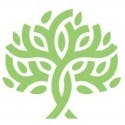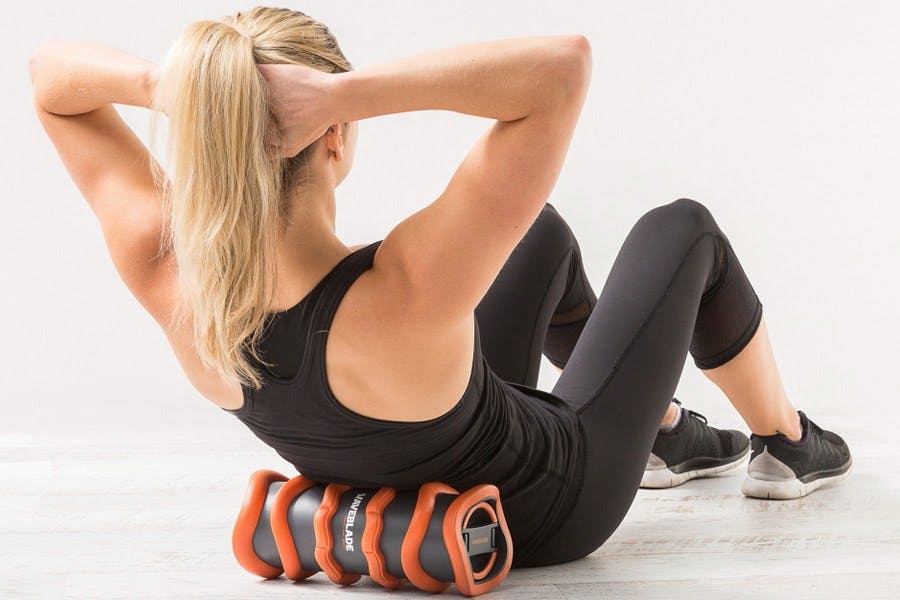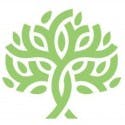Waveblade: Enhance Your Recovery
The Waveblade Sports Roller</a> is a new sports massage tool, designed to assist recovery, release tight muscles, and improve performance. Engineered in Australia by our friends Choppy Somjee and Matt Waterton, the Waveblade is almost at our doorsteps (we’ve already ordered two).

Bare Blends
2016-10-24

The Waveblade Sports Roller is a new sports massage tool, designed to assist recovery, release tight muscles, and improve performance. Engineered in Australia by our friends Choppy Somjee and Matt Waterton, the Waveblade is almost at our doorsteps (we’ve already ordered two).
The team are hoping to reach their goal of $40,000 to manufacture the Waveblade, and thanks to their newly launched Kickstarter campaign, they’re already over a third of the way there. Worthy of the accolades it has already received, the Waveblade will revolutionise the fitness and recovery industry, and we’ll be selling it on the Bare Blends store when it arrives.
Choppy has been a huge part of Bare Blends for a long time, and an integral advisor to the team. We chatted to Choppy about the best exercise nutrition, training pro surfer Soli Bailey, and of course, the Waveblade.

How did you first meet the Bare Blends team, and what is your role with Bare Blends now?
I met the Bareblends team in Byron Bay through some mutual friends and we nerded out right away on health, nutrition and movement.
My current role with Bare Blends is on the research and development side where I provide nutritional science support when coming up with new exciting BB formulas.
Where did your passion for fitness and nutrition come from?
Great question, quite simply my passion for fitness and nutrition comes from the desire and habit to constantly improve myself and the health and wellbeing of the people in my life.
You currently work with professional surfer and Bare Blends ambassador Soli Bailey, how is that going?
Soli and I have been working together for over a year now and we have come a long way with respect to his surf strength and nutrition.
Soli is the first surf athlete I have worked with and it has been a remarkable journey for both of us so far. We have both learnt a great deal from each other and this synergy has fueled us to keep elevating his surfing to new levels.
The most challenging I face as his performance coach and therapist has been fitting in time for consistent training and nutrition. As with most professional surfers, he has a hectic competition schedule, sometimes we only get as little as three days to get his body up to speed before he is on a plane for the next event. When he gets back we start back at square one, but that’s his reality, my job is to ensure he has everything he needs to maximize his recovery and physically prepare him for the next competition.
Soli is a phenomenal natural athlete with incredible mental strength, definitely one to keep your eye on.
What does Soli's training routine look like?
Soli’s training scheduled is dictated by the competitions he chooses to compete in each year.
From January to June, the competitions schedule allows for Soli to be at home and we capitalise on this by focusing on upper and lower body strength and plyometrics. This is a very important time for us to build a strong foundation for the rest of the year.
During this time, Soli spends long hours in the water sharpening his skill and technique.
For professional surfers, the season really picks up and gets more competitive towards the end of June, starting with the J-Bay Open (WSL) and Ballito Pro (QS) in South Africa.
After Soli gets back from South Africa we focus on power, speed and explosiveness, and this is when we push him hard. We work very closely together to ensure he is constantly adapting positively for the next event.
How is training surfers different from training with other athletes?
The surfer is one of the most unique athletes on the planet, I have a lot of respect for what they do and what their bodies have to endure.
In my opinion, what makes the surfer so unique is that they have to respond to constantly changing ocean conditions, temperatures, and have to be able withstand enormous amounts of force.
There is so much unpredictability in their sport that they deal with and as such, they have a split second window to react and produce a result. That’s a lot of pressure.
His strength and conditioning year-routine is focused primarily on diaphragmatic breathing, hip and trunk control and keeping his nervous system sharp.
Some of the main patterns we work on include generating and resisting rotational force (torque). An example of this type of drill would be resisted squat-to-trunk rotation.

Choppy Somjee
Nutrition is an extremely important part of sport and performance, which Bare Blends products would you most recommend?
That’s tough question as there isn’t just one product I use to support my nutrition. The three main products I use are: Bare Greens, Bare Whey Protein Isolate, and Bare Berries.
How important is a good recovery routine after a workout?
Having a good recovery is not the attitude you want to take for maximizing your training effort, I believe you must have an exceptionally well thought-out recovery routine that involves, sleep, nutrition, self-massage and stretching.
Train hard, recover smart is the moto.
What does recovery involve?
I always tell my athletes that recovery is the simple and consistent habit of good quality nutrition at the right time and restorative sleep.
EAT, SLEEP and MOVE it’s really that simple.
What are the best foods to eat before and after a workout?
That’s great question, however the answer is not as straightforward as you may think.
What and when you eat, before and after exercise, can make a big difference to your performance and recovery.
There is much debate around what to eat and when, before and after training. The complexity kicks in due to the varying body types, individual goals and the type of training to be completed (strength, endurance or high intensity) and again different slightly for men and women.
Instead I will answer the questions by providing a rough guideline.
Before you train:
Depending on what suits your individual needs, you can simply have a normal meal in the few hours before exercise.
Or you can have a smaller meal just before your exercise session. (If you’re trying to put on mass, you may even want to do both.)
Option 1: Eat a meal 2-3 hours before you train.
This includes a breakfast type meal for example:
- 2 eggs (boiled or scrambled)
- Half a cup of greens
- Small handful of seeds and nuts,
- Carb-dense low-GI fruits (kiwi fruit and berries)
Option 2: Eat 0-60 min
Rather than eating a larger meal 2-3 hours before exercise, some people like to eat a smaller meal closer to your training session.
The only issue with that is that the closer you get to your workout, the less time there is to digest. That’s why we generally recommend something liquid at this time, like a shake or a smoothie.
Here’s a delicious example:
- 1 scoop Bare Blends' Raw Cacao WPI
- 1 fist spinach
- berries
- 1 tsp peanut butter
- Unsweetened almond milk
Now let’s take a look at post-exercise nutrition.
Post-workout nutrition can help you:
- Recover
- Rehydrate
- Refuel
- Build muscle
- Improve future performance.
0-2 hours after exercise:
The approach to recover from training is the same as your preparation for a workout: have a mixed meal of real food.
Look for a good balance of your major food groups:
- 200-300g of protein
- 2 fists of vegetables
- 2 handfuls of carbs
- 1-2 tablespoon of fats (think avacado or full cream yogurt)
- low-calorie beverage like water or Bare Juices Immunity blend
If you’re a healthy person who exercises regularly, you probably don’t need special workout nutrition strategies, shocked?

The Waveblade and Bare Blends teams: from left to right - Richard, Matt, Choppy, Chris and Ryan.
What helps you stay on top of your game?
Here are my top 10 performance secrets that help me a the top of my game:
- Sleep is my weapon: I am in bed by 9.30pm every night and up at 5.30am. I monitor my sleep patterns and use an app (Sleep Cycle) to wake me up at in the right REM cycle.
- I eat first thing in the morning: I eat a small meal that consists of protein and fats.
- I cycle through my coffee to support optimal liver function. I call it the 3 x 3 rule I take 3 days off caffeine every 3 weeks.
- My training consists of body weight (gymnastics and calisthenics) and strength-based movements (dead-lift, front squat). I always feel strong, balanced and challenged.
- I eat a lot of slow-cooked foods that include chicken and beef, rich with good fats and dense carbohydrates.
- I eat daily natural pre and pro-biotic food groups (e.g sauerkraut) to help my immune system and build a good gut health.
- I use specific fascial stretching soft tissue techniques to decompress my body at the end of the day.
- I only train intensity twice a week for 20 min per session.
- I use movement and mindfulness techniques (such as slack lining) to gain clarity and focus.
- I never stop learning.
The Waveblade is an amazing new fitness tool which you've developed. Can you tell us about it?
I am very excited about the Waveblade sports roller.
The Waveblade Sports Roller has been a project my colleague Matt Waterton (www.strengthinmotion.com) and I have been working on for almost three years now.
Both Matt and are love our sports and over the years we have used and recommended many self-massage tools to support the prevention of injuries and to improve performance.
We found that many of the products on the market that we found either broke down or did not target specific muscle groups and were very bulky. We decided to build a tool that was effective, durable and portable for all sports enthusiasts and athletes.
We succeeded, the feedback and support has been outstanding!
How can the Waveblade help with fitness and recovery?
Fundamentally the Waveblade is designed to improve blood flow, break up fibrotic adhesions and relax tight muscles.
- Circulation is the most valuable benefit for self-massage and mobility tools. It maximizes the supply of nutrients and oxygen by boosting blood flow and creating a dense healing environment.
- Circulation also helps reduce the recovery time between training sessions. The sophisticated mechanism of flushing out by products of muscular work including carbonic and lactic acid is greatly enhanced with self-massage.
- Self massage helps prevent and even improves the healing rate of injuries. This is accomplished by the breakdown of fibrotic adhesions which are restrictions that build up after a training session. When theses fibrotic adhesions are broken up there is an opportunity to circulate out the metabolites that accumulate as a result of training (nitrogen, phosphorus and sulfur) and enhance tissue repair.
We have just launched our Kickstarter campaign! After three years of product development we have signed off on the engineering designs and started tooling the product!
When can I get my hands on a Waveblade of my own?
It goes without saying that we are a little excited, and very proud to finally bring the Waveblade to life!
What can we look forward to in the future with yourself and Bare Blends?
I hope to help advise and drive the future of the Sports Performance Bare Blends range of supplements. Watch this space!
What is your all time favourite Bare Blends product?
That would have to be the Bare Berries, I am huge fan of the antioxidant goodness and it's versatile in my smoothies.
To help support the cause, visit the Kickstart Campaign here, and follow the boys below for further updates.


